Valentine Science: Frozen Vinegar Hearts
Looking for science ideas for Valentine’s Day? I have several valentine activities to share over the next few weeks. This idea involves two ingredients kids love: baking soda and vinegar. Add some hearts and you have a perfect Valentine’s Day science activity.
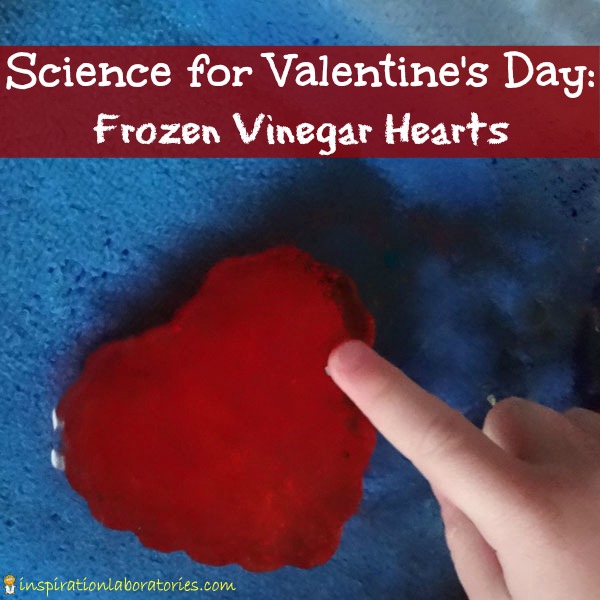
Valentine Science: Frozen Vinegar Hearts
You know all about the standard baking soda and vinegar reaction, right? Vinegar is an acid. Baking soda is a base. Combine the two together and you get a chemical reaction that produces water and salt…
What happens if we freeze the vinegar or baking soda or both? Set up this investigation to find out.
Materials:
- baking soda
- vinegar
- water
- freezer trays or molds {in heart shapes for fun}
- food coloring {optional}
Setup:
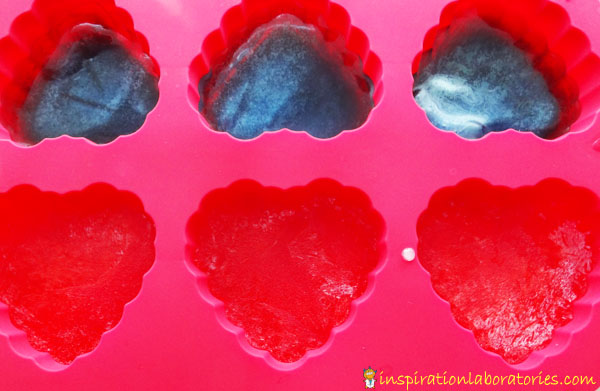
{The amounts aren’t really that important here.}
- Fill your freezer trays or molds half full of water and half full of vinegar. {Use more vinegar and get more bubbles faster.}
- Add a drop or two of food coloring.
- Freeze.
- Add 1 teaspoon of baking soda to 1 cup of water. Stir to dissolve.
You could also freeze the baking soda and water solution.
The Invitation
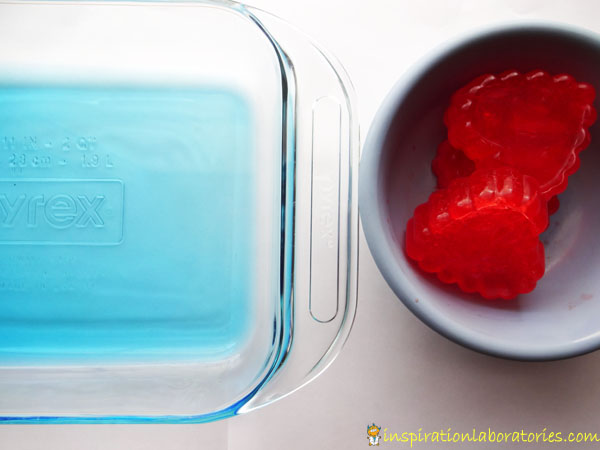
Add the baking soda and water combo to a pan or bowl. Place the frozen vinegar hearts in a second container. Invite your child to explore. He will mix the frozen hearts with the water. As the ice melts, the baking soda and vinegar will react. {You will see bubbles and excitement.} You will also see the colors mix.
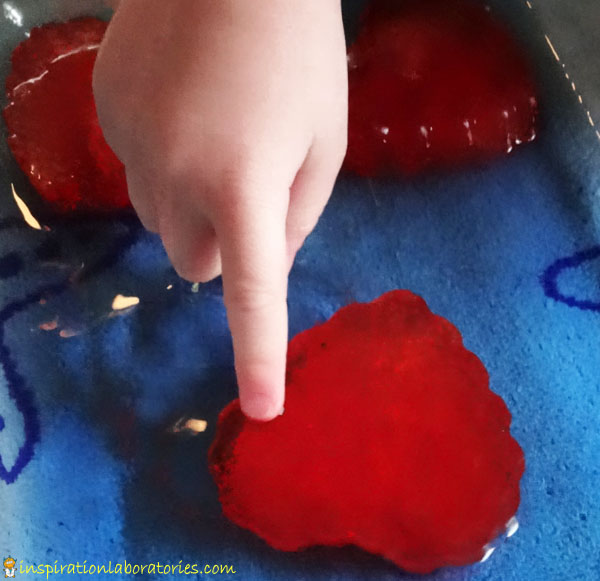
Allow your child to add more baking soda and water solution to the frozen vinegar.

Add baking soda directly to the frozen vinegar. This will also produce a reaction. If you dunk the ice in water first, the baking soda reacts faster. {It reaches the vinegar more quickly.}
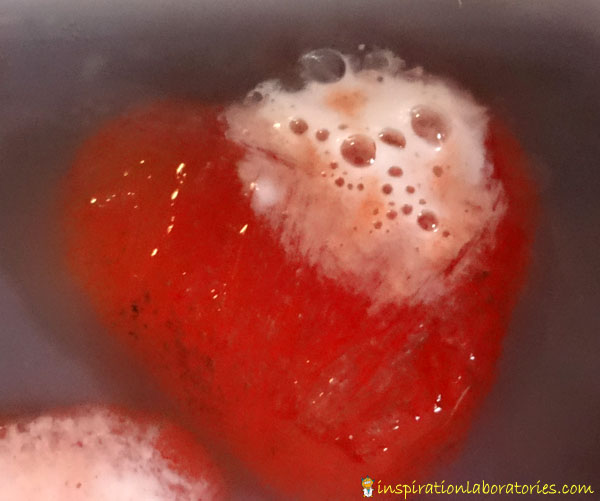
Try it with frozen water minus the vinegar. Will it bubble when baking soda is added to it? {No. baking soda doesn’t react with water.}
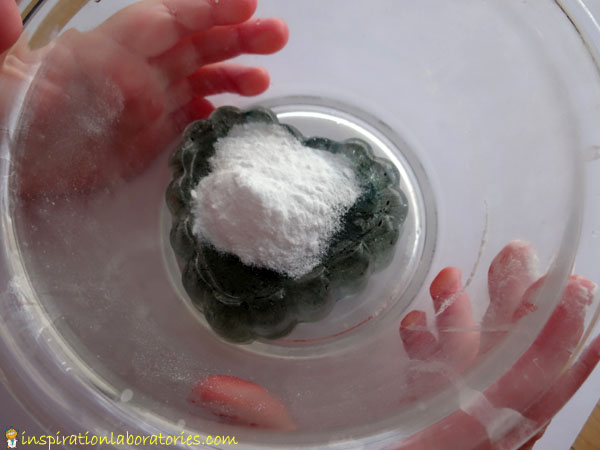
Reminders and Cautions
Baking soda and vinegar are safe to touch. However, contact with the eyes should be avoided. Rinse eyes with water if your child happens to stick his hands in his eyes after touching vinegar. Wash hands when you are finished playing.
It goes without saying that this activity should be supervised by an adult.
Questions to Ask
Ask your child what she thinks will happen. She may talk about ice floating on water. Make observations as you go along. The ice heart floats on the water.
There are bubbles forming. What do you think the ice is made of? What have you mixed together with baking soda that creates bubbles? Vinegar! {My 3 year old answered this. We have played with baking soda and vinegar quite often and talked about the bubbles. Aiden has an empty box of baking soda that he pretends to mix with a cup of “vinegar” and it makes pretend bubbles, so he’s quite familiar with what’s happening.}
What do you think the bubbles are? They are made when the vinegar reacts with the baking soda. If you are so inclined, you could discuss how the bubbles are carbon dioxide {like we exhale and plants take in}.
Talk about the colors you see. What happens when the red heart melts into the blue water? What other colors could we make?
More Valentine Activities
- Turn a simple valentine heart craft into a learning activity.
- Explore hearts on the magnet board.
- Look through our past Valentine’s Day ideas here. There are more activities still ahead.
Be sure to subscribe to our weekly newsletter and get exclusive science explorations for young scientists in each issue.
Linking up here.

Leave a Reply